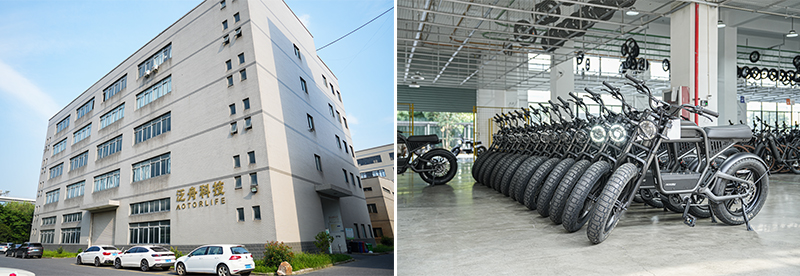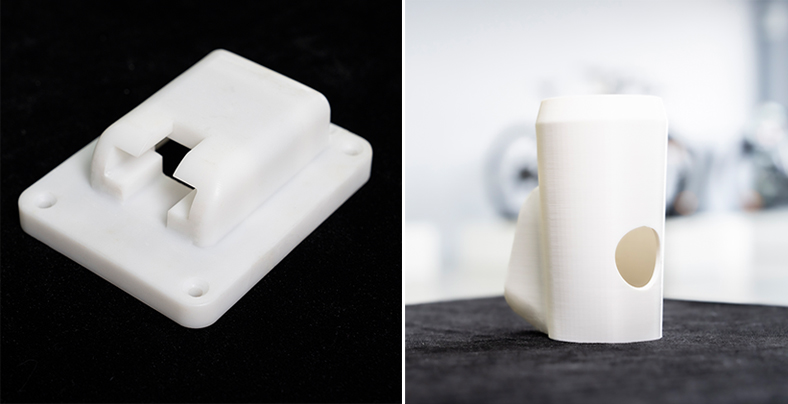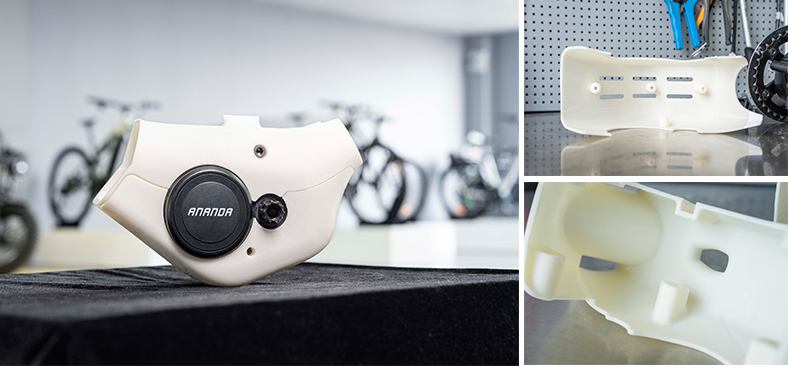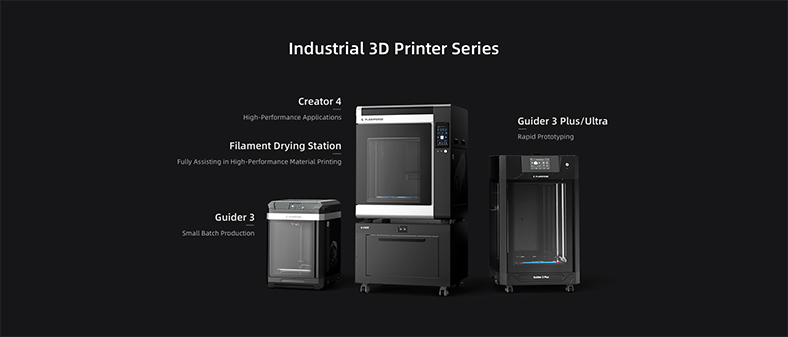3D Printing and Bicycle Manufacturing
During traditional manufacturing, the production of bicycles is a complex process that involves the assembly of many different parts, as well as a significant amount of iterative design validation. Furthermore, in a market environment where consumers increasingly pursue personalization and creativity, new types of bicycles require more time and manufacturing costs during the design prototyping phase. To meet the demand for rapid manufacturing, 3D printing technology is being widely applied in prototype development and end-part production, covering components such as handlebars, frames, saddles, helmets, and even tires. This technology accelerates the development trend of lightweight and customized manufacturing in the bicycle industry. The lighter frames, improved handling performance, and stylish designs are gaining popularity among trendy consumer groups.
Client Introduction
Hangzhou Fanzhou Technology Co., Ltd. (hereinafter referred to as "MOTORLIFE") is mainly dedicated to the design, production and sales of high-end electric bicycles. Our products include electric mountain bikes, city ebikes, folding ebikes, etc., offering ODM and OEM services to numerous international renowned brands. We have various production lines for different types of electric bikes, including the Mammoth, Leopard, Rhino, Eel, and other series. With the continuous influence of low-carbon environmental protection, healthy sports, and fashionable leisure concepts, consumers pay more attention to the experience of two-wheel travel. Especially in the European and American markets, there is a high demand for E-bikes that combine sports and leisure attributes.
Traditional Manufacturing and Outsourcing Printing
Our client, MOTORLIFE, has established stable partnerships with dozens of countries or regions worldwide. They have a significant demand for product design validation. Before deciding to introduce 3D printers, they had tried both traditional manufacturing processes and outsourcing 3D printing services. Typically, for a medium-sized bicycle component, it took about a month from sending out the design drawings to receiving the sample using traditional manufacturing methods. If there were significant dimensional accuracy errors or design adjustments, a second sample making would be needed. This inefficiency affected the delivery schedule during peak seasons, requiring timely communication with partners on the prototype validation status. Also, the client attempted to send some urgent prototyping needs to 3D printing service providers. Although the sample lead time could be shortened to 1-2 weeks, the high printing costs increased research and development expenses. For a new type of bicycle, multiple iterations of appearance and structural design, as well as several rounds of printing for structural and functional testing, were necessary. Over the course of a year, the overall outsourcing printing cost amounts to several hundred thousand RMB, which is significantly higher than the cost of introducing an industrial-grade 3D printer.
Flashforge 3D Printing Solution
After contacting the customer and thoroughly understanding their needs, Flashforge provided a detailed analysis:
- Considering the long-term investment, a suitable 3D printer will bring a high return on investment to our client.
- For general prototype validation samples, models printed with ABS/ASA engineering materials can meet the requirements for high dimensional accuracy and mechanical performance; For a small number of structural samples that require lightweight and higher performance, carbon fiber composite materials are needed; In addition, parts such as handles and seats require the use of flexible materials for printing to meet the needs of comfort validation in product design. Therefore, a stable, high-performance 3D printer that supports multiple materials is the ideal choice for customers.
Taking all these factors into consideration, our client ultimately chose the Flashforge Creator 4. It is a high-performance industrial-grade printer with multi-material applications, a constant chamber temperature of 65℃, and a large build volume of 400*350*500mm, fully meeting the diverse application needs of the client.
Quick-change structural part (Left); Head tube (Right)
Claw (Left); Model design (Right)
Currently, the client is almost continuously printing their designs for 24 hours. The design verification cycle can be shortened to 1-2 days, or even just a few hours, greatly accelerating the product validation process and indirectly improving order delivery efficiency. In terms of cost, only the filament cost of approximately 0.1-0.2 RMB/gram needs to be considered. Additionally, the customer can quickly respond to customized order requirements, avoiding missed business opportunities.
Benefits of Flashforge 3D Printing for Client
Rapid Prototyping Example - Mid-Drive Motor Housing
Mid-drive motor is one of the core components of an electric bicycle. It is located at the central axis of the bicycle and transmits power to the rear wheel through a transmission device. The weight of a typical bicycle motor is around 3kg, making it one of the heavier components of the vehicle. Placing the mid-drive motor in the middle of the frame helps balance the overall weight of the bicycle and effectively prevents the bicycle from tipping over due to an unstable center of gravity during turns. These characteristics place stringent requirements on the motor housing, which needs to have high dimensional accuracy and excellent physical performance.
Mid-Drive Motor Housing
The images above show a mid-drive motor housing printed with ABS material using Creator 4. The housing consists of two separate shells that are assembled with screws. Creator 4 offers a dimensional accuracy of ±0.15mm, allowing for precise printing of small screw holes on the shell. The internal threads are clearly visible, avoiding any minor errors that could affect the assembly. Additionally, the constant chamber temperature of 65℃ ensures that the corners of the shell remain undistorted and free from warping, ensuring a seamless assembly. Furthermore, the shell also requires a grille-like heat dissipation area in its design. This shape is prone to issues such as stringing or sagging during printing, but Creator 4 has already successfully addressed these printing challenges.
By introducing the Creator 4 3D printer, our client, Fanzhou’s (MOTORLIFE's) R&D department, is able to achieve lower manufacturing costs, higher printing efficiency, and rapid response to market demands. This enables them to accelerate product iteration and upgrades, and compete in overseas markets. Moreover, Creator 4's 1+3 IDEX (independent dual extruders) combination design allows the client to meet their printing needs for various materials, including flexible filaments, engineering filaments, and fiber composite filaments. In the field of bicycles, the future of 3D printing has arrived, and it is now a moment to embrace changes. We believe that Flashforge 3D printer will assist our client in achieving more innovative product development.
About Flashforge
Flashforge is a leading brand in the global 3D printer industry. Flashforge has deeply cultivated the needs of 3D printing industry and launched a new series of FDM 3D printers. The high-speed Guider series 3D printers feature high-speed prototyping, enabling rapid prototyping and manufacturing; the performance-focused Creator series 3D printers, with high-temperature chambers, are suitable for 3D printing engineering materials, carbon fiber and glass fiber composite materials. Flashforge, with products of stable and reliable 3D printers, high-quality 3D printing materials, professional slicing software and comprehensive after-sales service, provides small and medium-sized enterprises with a full range of 3D printing digital solutions for rapid manufacturing, accelerates design iteration and productization, and leads the new future of 3D printing in intelligent creation.













